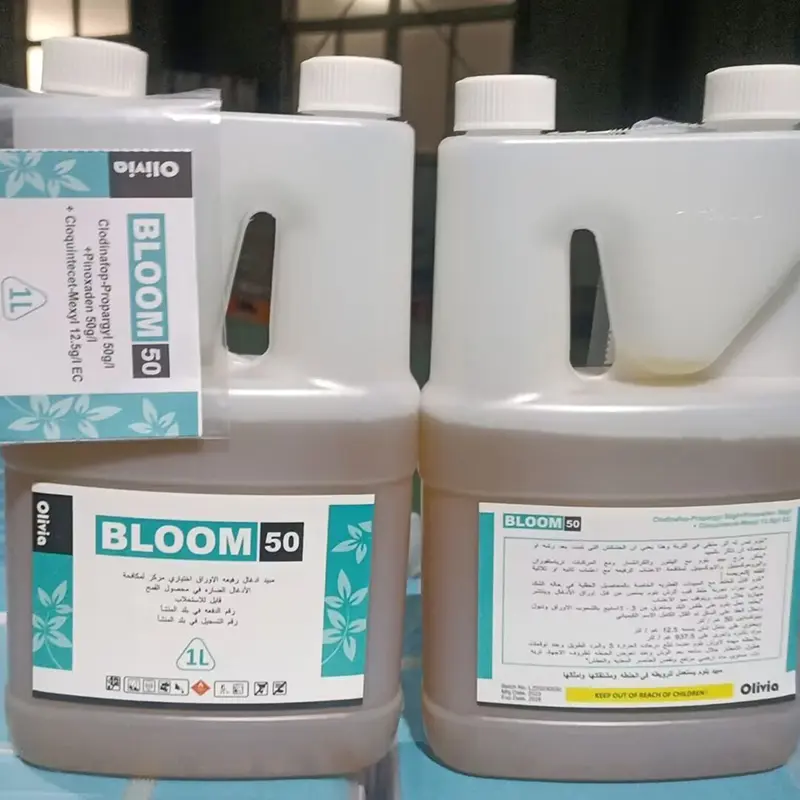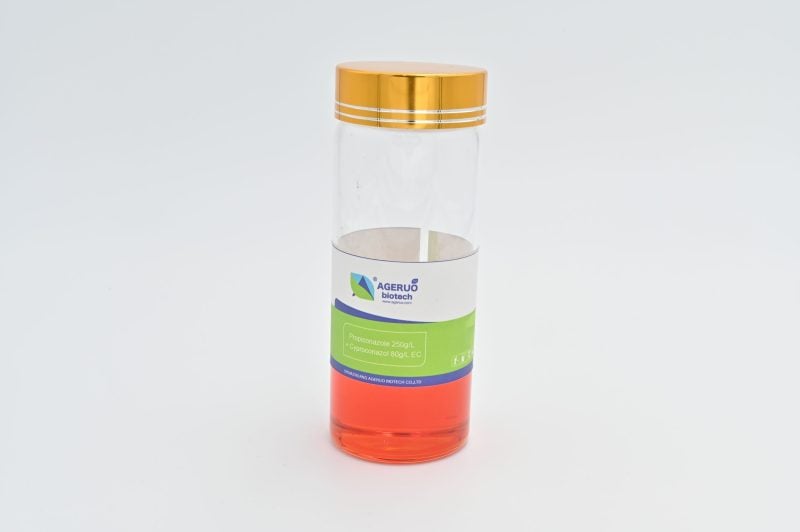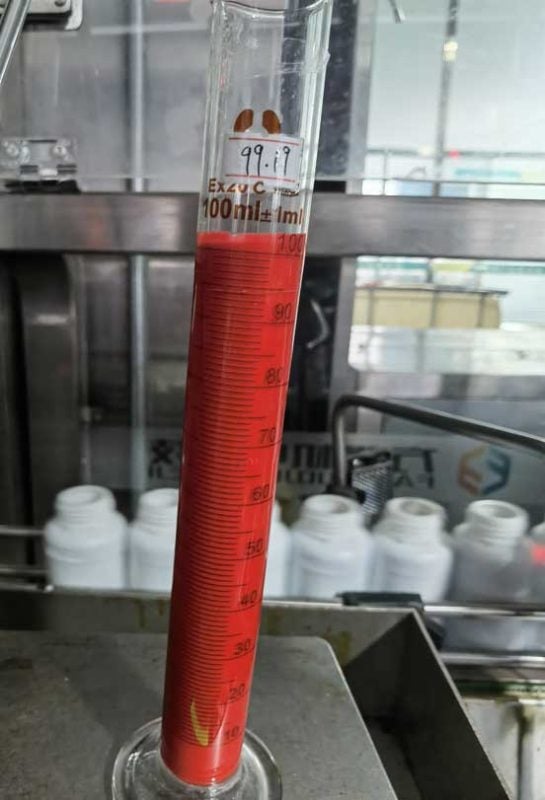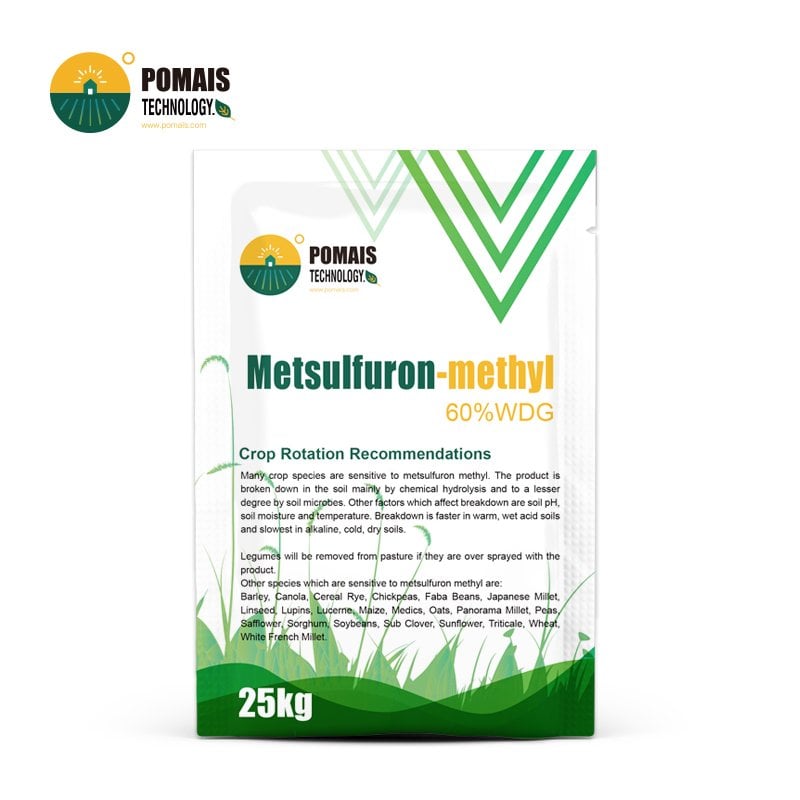Flonicamid 50% WDG Insecticide
Flonicamid 50% WDG (Water Dispersible Granule) is a state-of-the-art systemic insecticide designed to combat piercing-sucking pests in a wide range of crops. This innovative formulation offers rapid action, excellent crop safety, and an environmentally friendly solution for pest control. Whether in fruit orchards, vegetable fields, or other agricultural settings, Flonicamid delivers outstanding performance against aphids, whiteflies, and leafhoppers.
- Designed for Professional Buyers & Bulk Orders
- This product is available for business purchase and large-scale distribution.
- We support custom packaging, labeling, and formulation to meet your market needs.
- Let’s build your brand together.

About Flonicamid 50% WDG Insecticide
About Flonicamid 50% WDG Insecticide
| Name | Flonicamid 50% WDG Insecticide |
| CAS Number | 158062-67-0 |
| Molecular Formula | C9H6F3N3O |
| Molecular Weight | 229.16 g/mol |
| Structure | Pyridinecarboxamide with trifluoromethyl and cyanomethyl functional groups |
| Chemical Family | Pyridinecarboxamide |
| Synonyms | Cyanomethylnicotinamide; TFNA amide; IKF-309 |
| Appearance | Off-white to beige granules (as WDG formulation) |
| Melting Point | 155–157 °C |
| Boiling Point | Decomposes before boiling |
| Solubility | Slightly soluble in water; soluble in polar organic solvents |
| Mode of Action | Disrupts insect feeding by inhibiting the nervous system and feeding activity |
| Target Pests | Aphids, whiteflies, leafhoppers, thrips |
| Applications | Foliar spray for vegetables, fruit trees, cotton, rice, wheat |
| Formulation Types | Water Dispersible Granules (WDG) |
| Usage Rate | 120–240 g/ha |
| Environmental Impact | Low toxicity to pollinators and mammals; environmentally friendly |
| Shelf Life | 2 years when stored under proper conditions |
| Storage Conditions | Cool, dry, ventilated area; away from heat and moisture |
| Safety Precautions | Use gloves, masks, and protective eyewear during handling and application |
| Regulatory Status | Approved for use in many countries for controlling sucking pests in crops |
Mode of Action
Flonicamid belongs to the pyridinecarboxamide chemical class and works by inhibiting the feeding behavior of pests. It targets the nervous system, disrupting cellular signals and causing pests to stop feeding, ultimately leading to their death. Its systemic properties ensure absorption into the plant tissue, protecting both treated and new growth.
Features
- Broad-Spectrum Efficacy:
- Controls a wide range of piercing-sucking pests, including aphids, whiteflies, leafhoppers, and thrips.
- Highly effective on resistant pest populations, reducing economic damage to crops.
- Environmentally Friendly:
- Low toxicity to beneficial insects such as bees and predatory arthropods, making it suitable for integrated pest management (IPM) programs.
- Minimal environmental impact due to its targeted action and rapid degradation in soil.
- Fast-Acting and Long-Lasting:
- Immediate suppression of pest feeding within hours of application.
- Residual efficacy provides long-lasting protection, ensuring sustained crop health and productivity.
- Safe for Crops and Farmers:
- Systemic action ensures effective pest control without harming the crop.
- Low toxicity to humans, reducing health risks for farmers during application.
Applications
Recommended Application Rates
| Crop | Target Pests | Dosage (g/ha) | Application Method |
|---|---|---|---|
| Cotton | Aphids, Jassids | 75–100 | Foliar spray |
| Vegetables | Whiteflies, Thrips | 60–90 | Spray evenly |
| Rice | Brown planthoppers | 100 | Spray at early stage |
| Citrus | Aphids, Leafhoppers | 90–110 | Apply at pest onset |
Formulation and Benefits
- Formulation Type:
- 50% WDG (Water Dispersible Granule): Easy to mix, provides even coverage, and reduces dust during handling.
- Benefits:
- Water-Saving: Dissolves quickly, requiring less water for application.
- Storage-Friendly: Compact packaging ensures easier transportation and storage.
- Customizable Packaging: Available in bulk and small packaging options tailored to specific market needs.
Usage Instructions
- Preparation:
- Mix the recommended dosage with a small amount of water to create a slurry.
- Add the slurry to the spray tank and fill with water, ensuring thorough agitation.
- Application:
- Apply early in the pest infestation stage for maximum effectiveness.
- Use calibrated spray equipment to ensure even coverage.
- Best Practices:
- Avoid spraying during high winds or rain.
- Maintain a re-entry interval (REI) of 12 hours to ensure safety.
Packaging & OEM Options
- Retail Sizes: 100g, 250g, 500g, 1kg in aluminum foil or water-soluble bags
- Bulk Options: 5kg, 10kg, 25kg fiber drum or woven bags
- OEM Support: Multilingual labels, QR codes, barcode printing, and anti-counterfeit features
- Tailored Branding: Available for distributors with custom artwork and registration documentation
Competitive Advantages
- Broad Compatibility:
- Compatible with most other insecticides and fungicides, enhancing pest and disease management strategies.
- Low Residue Levels:
- Safe for export crops, complying with stringent international residue regulations.
- Proven Performance:
- Effective in diverse climates and soil types, providing consistent results.
Why Choose Flonicamid 50% WDG?
- Expert Manufacturing:
- Produced in ISO 9001-certified facilities, ensuring superior quality and consistency.
- Sustainability Focus:
- Environmentally friendly formulation aligns with modern agricultural sustainability practices.
- Global Trust:
- Widely used and trusted in major agricultural markets, including the US, Europe, and Asia.
Contact Us
Elevate your pest management program with Flonicamid 50% WDG. Whether you’re managing fruit orchards, vegetable fields, or ornamental plants, this premium insecticide ensures long-lasting and environmentally responsible pest control. Contact us today for more information, pricing, or to request a sample.
Frequently Asked Questions (FAQ)
Q1: What pests does Flonicamid 50% WDG control?
A: Flonicamid is effective against a wide range of piercing-sucking pests, including aphids, whiteflies, leafhoppers, planthoppers, and thrips.
Q2: How does Flonicamid work?
A: It disrupts the feeding behavior of pests by interfering with their nervous system. Insects stop feeding within 30 minutes after exposure, helping reduce crop damage and virus transmission.
Q3: Is Flonicamid safe for beneficial insects like bees and ladybugs?
A: Yes, Flonicamid has low toxicity to most beneficial insects when used according to label directions. Avoid spraying during peak pollinator activity to minimize impact on bees.
Q4: What crops can I use Flonicamid 50% WDG on?
A: This product is widely used on cotton, rice, vegetables (such as tomato, cucumber, chili), citrus, tea, and ornamental plants.
Q5: Can I mix Flonicamid with other pesticides?
A: Yes, it is compatible with many insecticides and fungicides. However, always perform a small jar test before tank mixing, and avoid mixing with highly acidic or alkaline products.
Q6: How often should I apply Flonicamid?
A: Reapplication intervals depend on pest pressure and crop stage. Typically, apply every 10–14 days when pests are present or based on your local agricultural recommendations.
| Name | Flonicamid 50% WDG Insecticide |
| CAS Number | 158062-67-0 |
| Molecular Formula | C9H6F3N3O |
| Molecular Weight | 229.16 g/mol |
| Structure | Pyridinecarboxamide with trifluoromethyl and cyanomethyl functional groups |
| Chemical Family | Pyridinecarboxamide |
| Synonyms | Cyanomethylnicotinamide; TFNA amide; IKF-309 |
| Appearance | Off-white to beige granules (as WDG formulation) |
| Melting Point | 155–157 °C |
| Boiling Point | Decomposes before boiling |
| Solubility | Slightly soluble in water; soluble in polar organic solvents |
| Mode of Action | Disrupts insect feeding by inhibiting the nervous system and feeding activity |
| Target Pests | Aphids, whiteflies, leafhoppers, thrips |
| Applications | Foliar spray for vegetables, fruit trees, cotton, rice, wheat |
| Formulation Types | Water Dispersible Granules (WDG) |
| Usage Rate | 120–240 g/ha |
| Environmental Impact | Low toxicity to pollinators and mammals; environmentally friendly |
| Shelf Life | 2 years when stored under proper conditions |
| Storage Conditions | Cool, dry, ventilated area; away from heat and moisture |
| Safety Precautions | Use gloves, masks, and protective eyewear during handling and application |
| Regulatory Status | Approved for use in many countries for controlling sucking pests in crops |
Mode of Action
Flonicamid belongs to the pyridinecarboxamide chemical class and works by inhibiting the feeding behavior of pests. It targets the nervous system, disrupting cellular signals and causing pests to stop feeding, ultimately leading to their death. Its systemic properties ensure absorption into the plant tissue, protecting both treated and new growth.
Features
- Broad-Spectrum Efficacy:
- Controls a wide range of piercing-sucking pests, including aphids, whiteflies, leafhoppers, and thrips.
- Highly effective on resistant pest populations, reducing economic damage to crops.
- Environmentally Friendly:
- Low toxicity to beneficial insects such as bees and predatory arthropods, making it suitable for integrated pest management (IPM) programs.
- Minimal environmental impact due to its targeted action and rapid degradation in soil.
- Fast-Acting and Long-Lasting:
- Immediate suppression of pest feeding within hours of application.
- Residual efficacy provides long-lasting protection, ensuring sustained crop health and productivity.
- Safe for Crops and Farmers:
- Systemic action ensures effective pest control without harming the crop.
- Low toxicity to humans, reducing health risks for farmers during application.
Applications
Recommended Application Rates
| Crop | Target Pests | Dosage (g/ha) | Application Method |
|---|---|---|---|
| Cotton | Aphids, Jassids | 75–100 | Foliar spray |
| Vegetables | Whiteflies, Thrips | 60–90 | Spray evenly |
| Rice | Brown planthoppers | 100 | Spray at early stage |
| Citrus | Aphids, Leafhoppers | 90–110 | Apply at pest onset |
Formulation and Benefits
- Formulation Type:
- 50% WDG (Water Dispersible Granule): Easy to mix, provides even coverage, and reduces dust during handling.
- Benefits:
- Water-Saving: Dissolves quickly, requiring less water for application.
- Storage-Friendly: Compact packaging ensures easier transportation and storage.
- Customizable Packaging: Available in bulk and small packaging options tailored to specific market needs.
Usage Instructions
- Preparation:
- Mix the recommended dosage with a small amount of water to create a slurry.
- Add the slurry to the spray tank and fill with water, ensuring thorough agitation.
- Application:
- Apply early in the pest infestation stage for maximum effectiveness.
- Use calibrated spray equipment to ensure even coverage.
- Best Practices:
- Avoid spraying during high winds or rain.
- Maintain a re-entry interval (REI) of 12 hours to ensure safety.
Packaging & OEM Options
- Retail Sizes: 100g, 250g, 500g, 1kg in aluminum foil or water-soluble bags
- Bulk Options: 5kg, 10kg, 25kg fiber drum or woven bags
- OEM Support: Multilingual labels, QR codes, barcode printing, and anti-counterfeit features
- Tailored Branding: Available for distributors with custom artwork and registration documentation
Competitive Advantages
- Broad Compatibility:
- Compatible with most other insecticides and fungicides, enhancing pest and disease management strategies.
- Low Residue Levels:
- Safe for export crops, complying with stringent international residue regulations.
- Proven Performance:
- Effective in diverse climates and soil types, providing consistent results.
Why Choose Flonicamid 50% WDG?
- Expert Manufacturing:
- Produced in ISO 9001-certified facilities, ensuring superior quality and consistency.
- Sustainability Focus:
- Environmentally friendly formulation aligns with modern agricultural sustainability practices.
- Global Trust:
- Widely used and trusted in major agricultural markets, including the US, Europe, and Asia.
Contact Us
Elevate your pest management program with Flonicamid 50% WDG. Whether you’re managing fruit orchards, vegetable fields, or ornamental plants, this premium insecticide ensures long-lasting and environmentally responsible pest control. Contact us today for more information, pricing, or to request a sample.
Frequently Asked Questions (FAQ)
Q1: What pests does Flonicamid 50% WDG control?
A: Flonicamid is effective against a wide range of piercing-sucking pests, including aphids, whiteflies, leafhoppers, planthoppers, and thrips.
Q2: How does Flonicamid work?
A: It disrupts the feeding behavior of pests by interfering with their nervous system. Insects stop feeding within 30 minutes after exposure, helping reduce crop damage and virus transmission.
Q3: Is Flonicamid safe for beneficial insects like bees and ladybugs?
A: Yes, Flonicamid has low toxicity to most beneficial insects when used according to label directions. Avoid spraying during peak pollinator activity to minimize impact on bees.
Q4: What crops can I use Flonicamid 50% WDG on?
A: This product is widely used on cotton, rice, vegetables (such as tomato, cucumber, chili), citrus, tea, and ornamental plants.
Q5: Can I mix Flonicamid with other pesticides?
A: Yes, it is compatible with many insecticides and fungicides. However, always perform a small jar test before tank mixing, and avoid mixing with highly acidic or alkaline products.
Q6: How often should I apply Flonicamid?
A: Reapplication intervals depend on pest pressure and crop stage. Typically, apply every 10–14 days when pests are present or based on your local agricultural recommendations.
Related Products
Latest News












